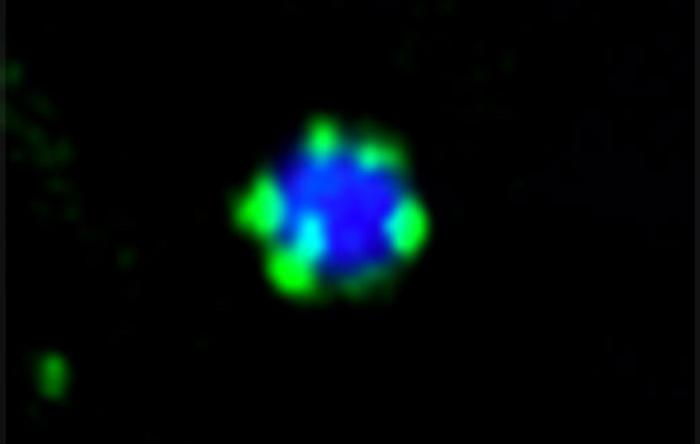
In a groundbreaking study published in Nature Cell Biology, researchers have uncovered pivotal insights into the cellular process known as autophagy, a vital mechanism through which cells recycle their components. This process is crucial for maintaining cellular health by dismantling and repurposing proteins and organelles that are no longer needed. It facilitates the removal of potentially harmful aggregates within the cell, contributing not only to homeostasis but also to the prevention of diseases such as Alzheimer’s and cancer.
Prof. Dr. Claudine Kraft from the University of Freiburg and Dr. Florian Wilfling from the Max Planck Institute of Biophysics co-led a research team that provided a deeper understanding of the initiation of autophagy. Their work focused on the specific conditions that are essential for this process to commence, revealing a delicate balance between the interaction of autophagy receptors and their targets. Their innovative approach included both simulations and experimental validations conducted on yeast and human cells.
One of the most exciting discoveries of this research is the role of weak molecular interactions in initiating the autophagic process. Previously, it was somewhat unclear how receptors on the surface of cells recognize cellular debris and initiate their degradation. Kraft’s team found that receptors must engage weakly with their targets to facilitate the onset of autophagy. This is contrary to the intuitive belief that stronger bonds would be more effective in signaling the need for degradation.
This counterintuitive finding has significant implications. It suggests that strong binding between receptors and targets could actually inhibit the activation of autophagy. The researchers elucidated this process through sophisticated computer simulations and experiments, which demonstrated that weak binding allows receptors to remain mobile, clustering randomly until a critical concentration is achieved, thereby triggering phase separation. This phenomenon is akin to the formation of droplets in oil and water, where the receptors gather into a cohesive entity, creating a specialized environment conducive for the recruitment of other autophagy-related molecules.
The experimentations conducted by the team involved introducing modified virus particles into yeast cells—situated in conditions previously unfavorable for degradation. By altering the surface characteristics of these virus particles to allow weak binding, the researchers successfully triggered autophagy, leading to the breakdown of viral proteins. In stark contrast, if the modifications resulted in a stronger binding affinity, autophagy would not initiate at all, underscoring the critical balance needed for this cellular process.
This breakthrough reveals a potential therapeutic avenue, especially with regard to managing neurodegenerative diseases and enhancing cancer treatment efficacy. By strategically manipulating the binding properties of receptors, it may be possible to guide cells to more effectively dispose of harmful protein aggregates that contribute to conditions like Alzheimer’s or to improve the pharmacodynamics of cancer treatments by enhancing the degradation of unwanted cellular components.
The research highlights how the ability to control the initiation of autophagy offers tantalizing prospects for therapeutic interventions; the therapeutic landscape could be reshaped by targeting this foundational biological process. It could lead to novel strategies that seek to enhance the body’s innate recycling mechanisms, thereby improving health outcomes for individuals suffering from age-related diseases or malignancies.
Furthermore, as autophagy plays an essential role in muscle maintenance and overall metabolic health, researchers speculate on the broader implications of their findings. If we gain a better understanding of how to manipulate this process, it may lead to breakthroughs in combating obesity, metabolic disorders, and the physical declines associated with aging.
The motivation behind this research stems from the urgent need to find effective treatments for diseases characterized by protein misfolding and aggregation. With Alzheimer’s and various cancers on the rise globally, understanding the triggers of autophagy could represent a significant leap in designing new drugs that facilitate cellular cleaning processes.
The implications of these findings extend beyond theoretical understanding; they raise the possibility of developing drugs capable of mimicking these weak binding interactions, effectively bootstrapping the autophagic process when it falters in disease states. This research underscores the complexity of intracellular signalling and highlights the intricate orchestration required for cells to maintain their health and functionality.
In a broader context, the collaboration between researchers from the University of Freiburg and the Max Planck Institute reflects a concerted effort in the scientific community to unravel the secrets of cellular behavior. Their findings shine a light on previously underestimated molecular dynamics that govern essential biological processes—offering hope to millions who suffer from age-related and degenerative diseases.
In conclusion, this study reveals critical insights into how autophagy can be initiated and controlled, setting the stage for future research to explore therapeutic avenues that target this vital process, thus contributing to the ongoing quest to enhance human health through novel scientific breakthroughs.
Subject of Research: Autophagy initiation mechanisms in cellular recycling
Article Title: Weak Molecular Interactions as Triggers for Selective Autophagy
News Publication Date: 2024
Web References: Nature Cell Biology DOI
References: Licheva, M., Pflaum, J., Babic, R., et al. (2024). Phase separation of initiation hubs on cargo is a trigger switch for selective autophagy. In: Nature Cell Biology.
Image Credits: Mariya Licheva / University of Freiburg
Keywords: Autophagy, Cell Biology, Protein Aggregates, Neurodegenerative Diseases, Molecular Interactions, Therapeutic Strategies.





